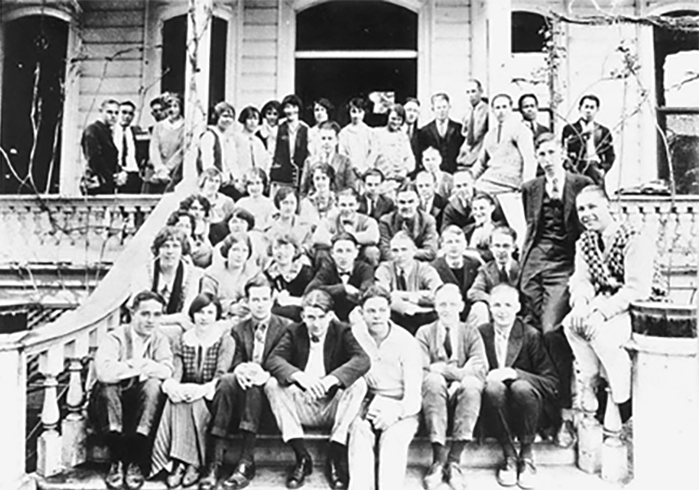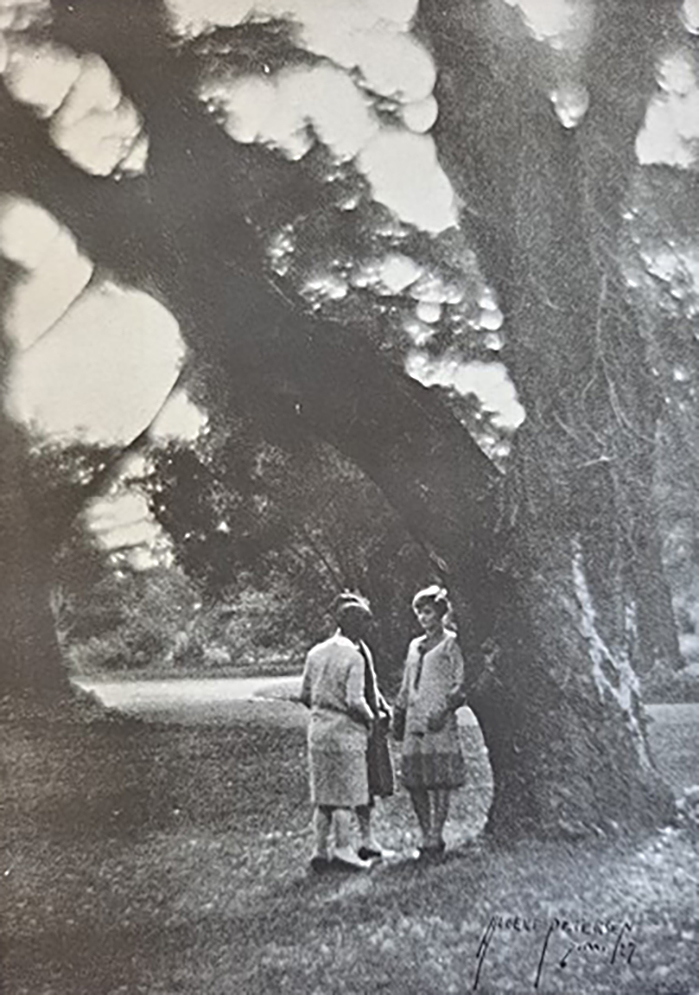The Kohl Mansion
SMJC’s first building of its own was a once-grand Victorian in today’s San Mateo Central Park
State regulators in 1922 told fledgling San Mateo Junior College, then meeting in the top floor of the city high school, that acquiring a building of its own was advisable.
Fortunately, one was available a few blocks away – and what a building it was.
From 1923 to 1927, the college’s home was the Kohl Mansion, a once-splendid Victorian built in the 1860s by Charles Polhemus, a founder of the city of San Mateo. The house and its spacious grounds dominated the center of town. They passed in the 1880s to sea captain William Kohl, who founded the Alaska Commercial Company. Kohl hired Golden Gate Park landscape architect John McLaren to beautify the grounds. (The still-standing Kohl Mansion in Burlingame, site of CSM’s Centennial Gala, was built by William’s son Charles Frederick.) In 1922, the city of San Mateo acquired the original Kohl Mansion property for what is now Central Park.
Locals treated such Gilded Age relics with benign neglect and irreverence. Marjorie Brace, a Kohl Mansion alum who helped celebrate College of San Mateo’s 75th anniversary, recalled that the mansion held 46 students and almost as many fireplaces: “There were fireplaces in every room.”
One third-floor room had red leather seats, a massive fireplace, beautiful wood paneling and cabinetry. Faculty men coveted the space for a gentlemen’s lounge. Instead, it became the physics lab.
The mansion’s wraparound veranda was walled in and used for library stacks. The wine cellar became the student store. Women’s physical education classes met in the kitchen. Closets became offices. The tapestries on the walls and gorgeous chandeliers were allowed to remain.
“Everything showed some evidence of past luxuries, and the organization seemed to be a large family that had a great deal of fun, enthusiasm and pep,” wrote Mildred Hickman in a 1931 San Matean story.
The dining room and living room were used for dances and assemblies. Students crowded onto the living-room stairs to hear popular speakers. There was no fire protection, a growing concern as years passed. By 1926, enrollment soared to 400. Tents were erected in the grounds to hold the overflow. Fire escapes were installed.
In 1927, San Mateo High moved to its present location. The college inherited the high school’s Baldwin Avenue campus, which it used for music, broadcasting and liberal arts classes into the 1950s.
Watch movies of student life at Baldwin Avenue in the 1920s and in the years before World War II.




